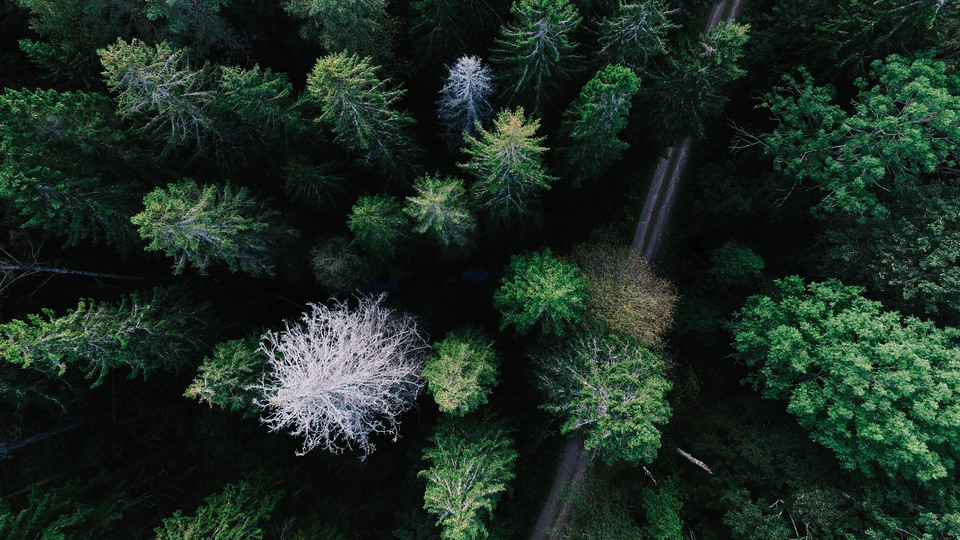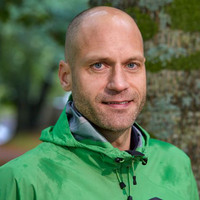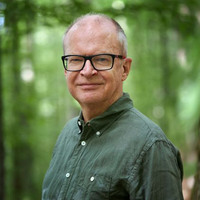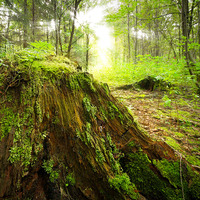
The forest is Sweden's gold in the climate transition – but is it enough?
Sweden's forests are expected to provide generously, and perhaps even more in the future: more timber, more biofuel, more renewable products to replace plastic. At the same time, the forest is to contribute as a carbon sink, accommodate a high level of biodiversity and be a place for recreation. How can this equation be reconciled, and is it even possible? Researchers at IVL are developing tools that can provide a better overall picture of the sustainability of Swedish forestry and the trade-offs that must be made.
Studies both in Sweden and the EU indicate that all the positive aspects of forestry – full climate benefits, maximum biodiversity, high social values and high economic returns – will not be fully realized. Political considerations and compromises will be necessary.

"The issue of how to manage forests is so polarized that it will be up to politicians to decide how forests should be used. So it's important that the decisions they make are based on well-founded assessments and knowledge," says Eskil Mattsson, researcher in forests and ecosystems at IVL Swedish Environmental Research Institute.
Swedish forestry may need to change in the future. The EU’s new forestry strategy points to a change in the direction of forestry, with more natural forestry without clear-cutting, more natural regeneration and greater focus on long-lasting products. In addition, the EU's nature restoration regulation will require more EU forests to be protected. The question is what this will mean for Sweden. Will the current Swedish forestry methods be considered sustainable or depleting?
In the Mistra Digital Forest research programme, IVL researchers Eskil Mattsson and Per Erik Karlsson aim to develop digital tools and methods for making integrated, quantitative sustainability assessments of Swedish forestry, as a way of dealing with the transition to a sustainable society.

"There is a huge need to standardize assessment methods and target values for calculating the sustainability of Swedish forestry. It's not enough to say 'this is good and this is bad'; we need to calculate numerical values for vastly different aspects as a basis for a good discussion. In this context, the work we do in Mistra Digital Forest is an important contribution", says Per Erik Karlsson.
During the first four years of the research programme, IVL has been responsible for the work package called Forests and Forest Values. Much of the work has involved developing various sustainability indicators for climate impact and biodiversity, the recreational value of forests, jobs generated by forestry, and the annual net economic income of forest owners. Together with SLU (the Swedish University of Agricultural Sciences), the researchers have analyzed the outcome of these indicators in a number of future scenarios.
"The method we've developed can be used to assess a forest owner's impact based on the forestry conducted. It's also possible to see the impact of forestry in relation to various target values, such as the environmental quality objectives contained in Sustainable Forests, which is one of Sweden's national environmental objectives”, says Eskil Mattsson.
Visualization of raw material flows and sustainability
Another tool that has been developed is the BioMapp visualization tool, which can be used to show different flows that come from the forest, and how these are distributed across different product categories such as forestry, pulp and paper and the timber industry. The tool can also be linked to sustainability indicators, and it can show the environmental impact of forest raw materials and forest products in different parts of the value chain.
"The sustainability indicators and BioMapp are useful for both forestry companies and policy-makers. They can be used in sustainability assessments of forest-derived products, and in the strategy work of forestry companies to assess different scenarios for future production. They can also serve as a basis for well-founded political decisions to show possible future developments in different types of forestry, ranging from forestry that simulates increased production and increased extraction of forest resources, to forestry that takes greater environmental considerations through nature conservation provisions, longer rotation times or more felling-free forestry," says Per Erik Karlsson.
A stronger focus on sustainable development

In September 2023, Mistra Digital Forest was granted funding for another four years. In the next phase of the research programme, the aim is to include the entire forest value chain in the sustainability assessment. This also means that the climate benefits from carbon storage in harvested wood products will be included according to the principles of international climate reporting. The researchers also want to assess substitution effects, i.e. the climate benefits of replacing fossil-based products with bio-based products.
"Forests play an important role in limiting Sweden's climate impact, while also providing a habitat for much of our biodiversity. These roles are closely linked and need to be resolved with the least possible impact on the rest of society. The work in Mistra Digital Forest helps to respond to this challenge", says Eskil Mattsson.
Find out more about the research programme at the Mistra Digital Forests website. External link, opens in new window.
External link, opens in new window.
For questions, please contact:
Eskil Mattsson, eskil.mattsson@ivl.se, tel. +46(0)10-788 67 34
Per Erik Karlsson, pererik.karlsson@ivl.se, tel. +46(0)10-788 67 57
Portrait photos: Johan Olsson/Mistra Digital Forest
